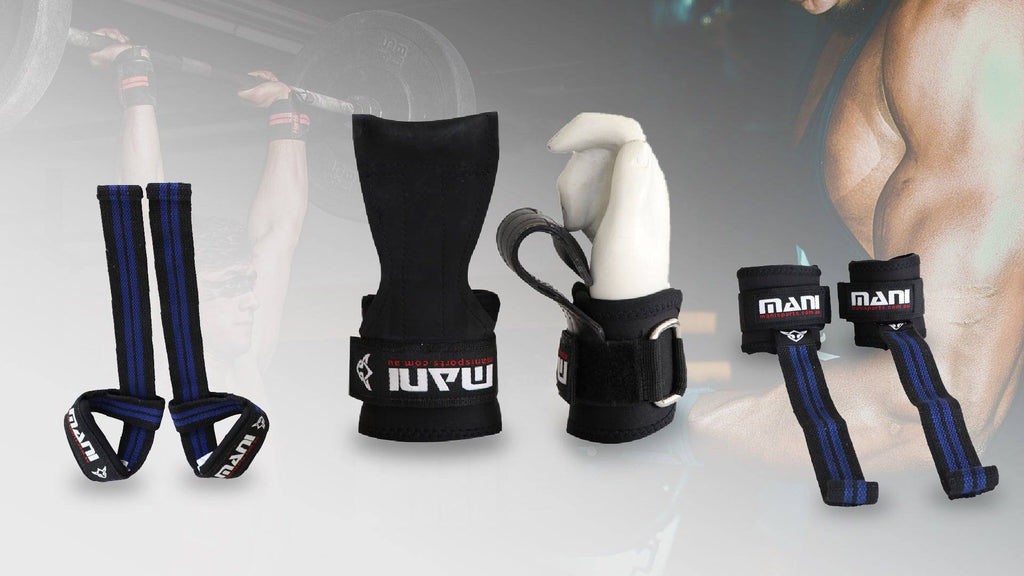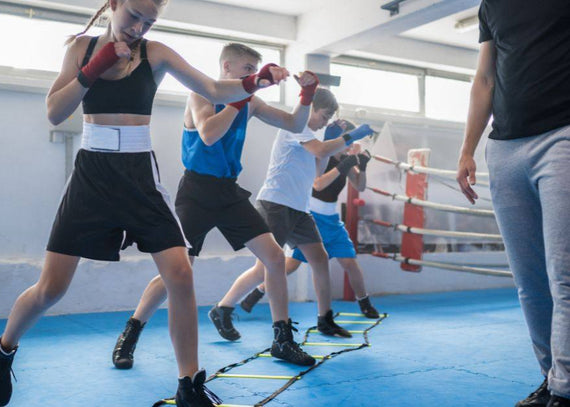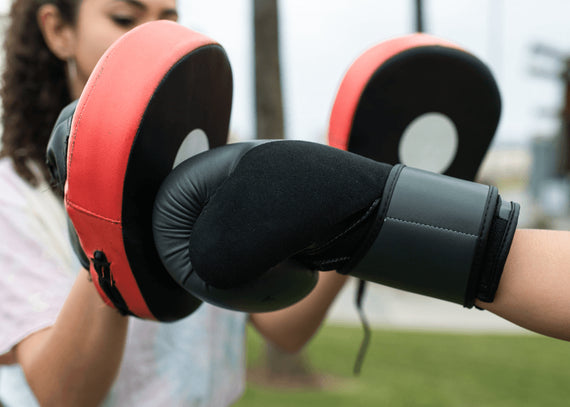When lifting, if you notice that your grasp is slipping, you have a serious issue. This is because, regardless of how physically powerful you are, you will always be constrained by your ability to hold onto the barbell. Smaller hands make this issue worse for those who have them.
As a result, you can be searching for lifting grips like lifting straps or lifting hooks. These two items are great lifting accessories to help you grasp right away. So, what makes lifting straps and lifting hooks different from one another? Lifting straps feature a lengthy piece of material that loops multiple times around the barbell and wraps over the wrist. While lifting hooks are attached to your wrist with a velcro band. A metal hook attached to the band hangs below the palm and is wrapped around the bar between your fingers.
Which lifting tool will work best for you, lifting straps or lifting hooks to strengthen your grip? We'll go over the specifics of each of these lifting accessories in this article, along with their advantages and disadvantages. By the end, you'll be able to identify which is ideal for your lifting circumstances.
What Are Lifting Hooks?
Lifting hook is a piece of gear that may help you get a stronger hold on objects. Lifting hooks typically consist of a velcro strap that is wrapped around the user's wrist and a metal hook that is positioned in the user's palms. You will be able to lift more weight without having to worry about having to readjust your position, thanks to the increased grip strength that lifting hooks provide. This will enable you to do your lifts with less strain on your joints.

Lifting hooks may take many different forms and configurations. Some hooks are two-finger hooks, while others are the more common J-hooks. These days, they often also come with lifting gloves already attached.
Weightlifting hooks provide a strong grip and may considerably improve the effectiveness of your exercises. But there is a price to pay for them. Using a lifting hook is most effective while doing "pull" exercises like deadlifts, barbell rows, upright rows, shrugs, and so on. Wrist hooks designed specifically for weightlifting are often more costly than standard wrist straps. They are more costly than straps since they include some leather, take more resources during production, and thus have a higher material cost.
Pros
- They move the weight from the wrist to the palm, relieving strain on the wrist.
- They will assist you in increasing your weights so that you can do more sets.
- They enable you to target muscles that would not otherwise be able to expand.
Cons
- The angle of the lifting hooks disqualifies them for some pull workouts.
- Some lifting hooks are costly because they are crafted from very durable materials.
- They cannot be used for push-ups.
Lifting Straps: What Are They?
At first glance, the distinction between a lifting hook and a lifting strap may not be immediately obvious. On the other hand, if one moves away from the velcro cushioning found on the wrists, this distinction becomes more apparent. In contrast to the J-hooks that were attached to the end of the lifting hook, lifting straps make use of straps made of either nylon, cotton, or leather.
These straps are longer and have the capability of going around the bar many times. The deadlift, various iterations of the "pull," and several Olympic weightlifting accessory exercises are just some of the lifts that may benefit from the usage of lifting straps. Weight lifting straps are quite adaptable.

On the internet, you can get a wide variety of lifting straps, including Olympic lifting straps, which are also known as closed-loop or lasso straps, as well as figure 8 straps, which are gaining more and more popularity. It's possible that lifting straps will look too wonderful to be true, but in most cases, that's because they are.
Lifting straps do, however, come with a few drawbacks that should be taken into consideration before using them. They need some preparation time before they can be wrapped and unwrapped around the barbell. Beginners may also seem to be confused by the intricacy of wrist straps, and beginners are often the victims of improper usage of wrist straps.
Pros
- They may be used for a variety of pull workouts, making lifting straps very adaptable.
- Straps depend on forearm strength, therefore they also increase grip strength.
- They are less expensive than lifting hooks.
Cons
- Straps for lifting demand considerable setup time, which might disrupt your training.
- Not recommended for beginners
- Push workouts cannot be performed with straps.
How To Use Lifting Hooks?
Using lifting hooks is rather straightforward. To use lifting hooks, follow these instructions.
- Adjust the velcro to be in line with your wrist by undoing it.
- Close the velcro and insert the hook facing outward in the palm of your hand.
- Use the hook to grab a dumbbell or barbell and hoist the weight.
How To Use Lifting Straps?
Follow these methods to employ a set of lifting straps:
- Open the velcro and insert your hand, similar to the lifting hook.
- After closing it, adjust the wrist position.
- As you stand in front of a barbell, wrap the wrist strap around it as many times as necessary. Adjust your grip, and you're all set.
Which one to buy?
Now that we've covered all there is to know about lifting hooks and lifting straps, the question that needs to be answered is, "Which of the two is better?"
The answer is straightforward: it is conditional.
If you want to lift higher weights during high-intensity exercises that precisely target certain muscles and isolate them, then lifting hooks are most likely the ideal choice for you to consider. Lifting straps, on the other hand, should be just what you want if all you want is to strengthen your grip while powerlifting without sacrificing any of your control over the bar.
Weight lifting straps are the most flexible alternative since they can be used for practically every pull exercise. However, they cannot deliver the increased force that lifting hooks provide for workouts like deadlifts, shrugs, cable rows, and barbell rows.
If you are really interested in increasing your grip power, developing stronger forearms, stimulating your target muscles, and being able to lift greater weights while engaging in high-intensity exercises, then the ideal course of action would be to go for both lifting hooks and lifting straps. It is entirely dependent on the requirements of the person as well as the particular goal that he or she has in mind while using weightlifting equipment.
Conclusion
When you're in the gym, lifting straps and lifting hooks make it possible to hold greater weight. Even while you should make it a point to work on improving your grip strength, using lifting accessories like these may enable you to continue to become stronger even if your grip strength is lacking.
Check out the selection of weightlifting accessories that Mani Sports carries if you are looking for lifting hooks and straps of superior quality. The lifting straps and hooks that we provide are the finest on the market, and they would be an excellent asset to have in the gym bag of any weightlifter.





